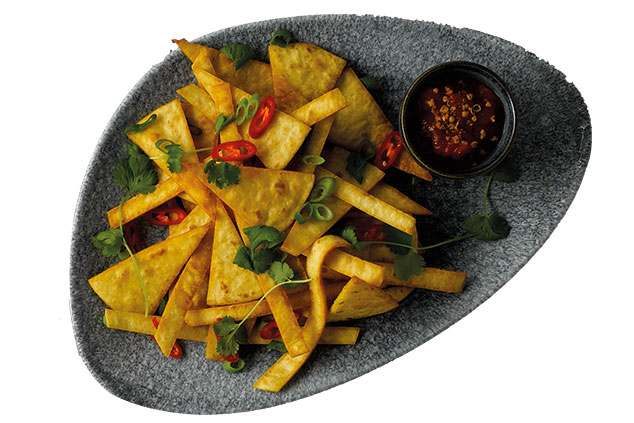
Churchill China is much loved by customers and investors alike. Wait for a chance to buy in.
Recently, I dropped my favourite mug. It stands out from the mugs sporting football club logos and hand-painted greetings scrawled by our kids because it’s tall and curves elegantly to a smaller base, like a cup, and it doesn’t bear slogans. The inside is white, and separated from its speckled exterior by a coffee coloured rim. It has lustre.
I watched in slow motion as the mug kissed the worktop with its handle, bounced, and skidded on its side into the backboard, which, like the worktop, is made from glazed lavastone – selected for its hardness. My mug remained unchipped and unbroken. Perhaps I was lucky, but I think there’s more to this story, because my mug is designed to look good and take a bashing in commercial kitchens.
A mug for life
The mug is made by Churchill China, and the company gave one like it to all the shareholders who attended its last annual general meeting. If I keep going back, I might collect a complete set.
For well over a decade, Churchill China has done well because restaurants, pubs and hotels have been expanding as we eat out in increasing numbers. Yet that simple narrative masks evolution in Churchill’s business that has helped it transform from a supplier of hardy tableware mostly in the UK, to a highly profitable manufacturer of striking tableware that earns half its revenues abroad, mainly in Europe.
Simultaneously, it has pared its less profitable retail business, as cheap imports have made it difficult for all but those companies with the strongest retail brands to thrive. Churchill actually prefers the restaurant trade, because reliable products and service lead to repeat business. Overall, economic tailwinds, the development of new products and markets, and investment in robotics has lifted return on capital from 4% to 15% since the financial crisis in 2009. Profit has increased by 180%.
A firm favourite
I haven’t added to the small number of Churchill shares I bought when the market was in the grip of the financial crisis in 2009. The share price has risen in a fairly straight line by a factor of nearly five since then, but whenever I’ve considered buying more, the price/earnings ratio has been high enough to put me off. The same is true today. The shares cost £9 each, which is more than 15 times current earnings.
This valuation, as well as being down to Churchill being a good business, may also be explained by the fact that it is listed on Aim. Although the exchange places less stringent requirements on its constituents than London’s main market, and has a reputation for harbouring unproven businesses. But Aim stocks also offer generous inheritance breaks and Churchill is one of a group of highly regarded Aim-listed companies that tend to trade at high valuations for this reason. The pool of good businesses on Aim is small, which explains why opportunities to buy them at an attractive price are rare.
A chance to buy?
However, losses at a few of Britain’s hitherto rapidly growing restaurant and bar chains suggest some have expanded recklessly, while the line between eating out and eating in is blurred by the rise of food-delivery services.
Instead of feeding us, loss-making restaurants are eating profits. And notably Churchill China has stopped talking about UK growth, putting the emphasis instead on its 10% annual growth targets in Europe and North America.
If bad news in the restaurant trade continues to get worse, Churchill, which claims a 25% UK market share, may be affected as customers scale back their ambitions. Depending on how investors react, one of those rare opportunities to buy the shares may present itself.
Kicking the tyres… making food look good
Given Churchill China’s UK market share, there’s a good chance that you can sample its merchandise whenever you eat out – just check beneath the plates to see who made them.
We can also test Churchill’s claim that its tableware makes food look good: It “frames the food”. For those who are interested, the company has an instagram account, which can be found via the username @churchill_1795 (the number is the year the company was founded). The account showcases dishes made by customers and presented on Churchill bowls and plates to more than 5,000 followers.
Most of the tableware on show is coloured and patterned, even though restaurants traditionally use plain white tableware. Plain white tableware contributes most of Churchill China’s revenue, but coloured and patterned tableware, like the company’s Raku range, is more interesting from a commercial perspective, because there are more points of differentiation, not just in design but also in production.
Sales of “added value” products like those in the Raku range have risen from 9% of the total in 2011 to 29% in the year to December 2016. Churchill not only charges more for Raku products because they’re beautiful and durable, but is able to manufacture the line cheaply, thanks to a new technique combining a print and a translucent glaze in a single process. As a result, Churchill’s fastest growing product category earns the highest profit margins.
Big profit margins mean Churchill tableware is in demand, but they also mean sales could fall substantially before manufacturing becomes uneconomic. However, the company’s innovations should allow it to prosper, even if some customers don’t.